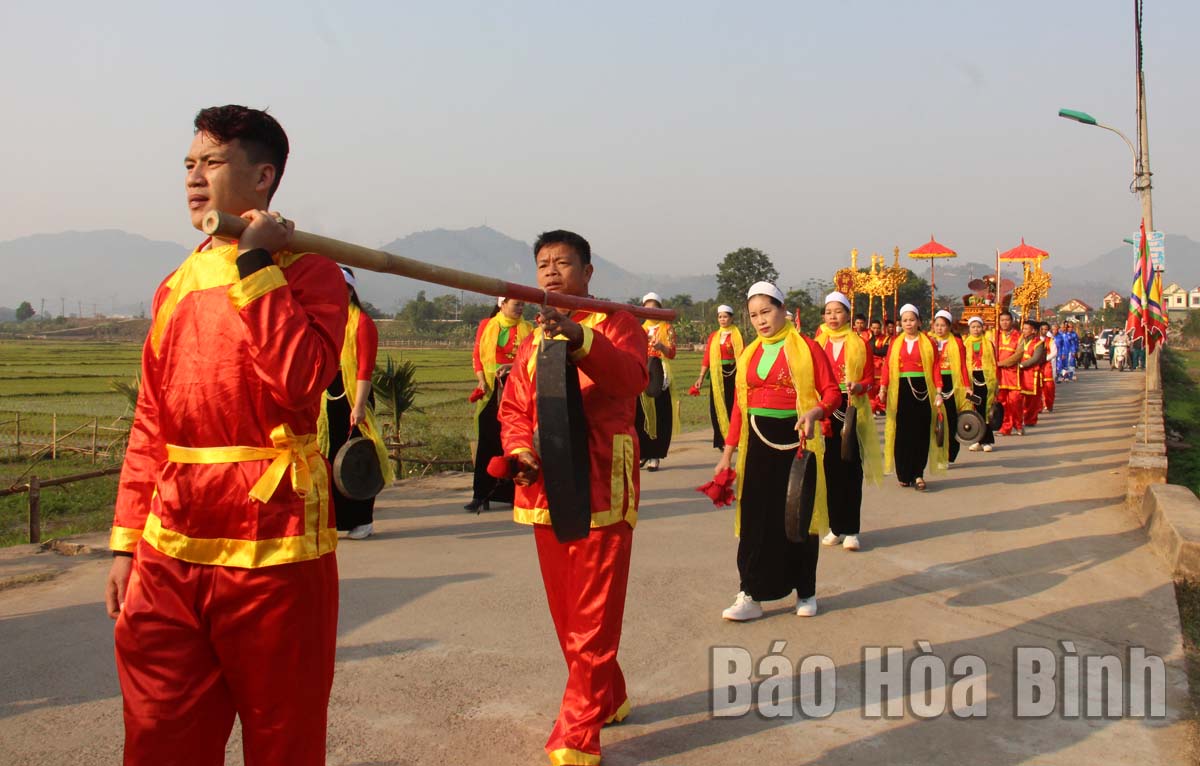
(HBO) – The Khai ha (going down to the field) festival at Dinh Ngoi – a communal house in Quynh Lam ward, Hoa Binh city – opened on January 30 or the 9th day of the first month of the lunar year.

The procession of Via Lua (the Spirit of Rice) to
Dinh Ngoi opens the festival.
Dinh Ngoi is where several gods are worshipped including Tan
Vien Son Thanh – one of The Four Immortals in traditional Vietnamese mythology,
and those guarding the village against disasters and bringing it fortune.
The festival, taking place on the 8th and 9th days of the
lunar year annually, aims at paying respect to the gods and ancestors who
contributed to the protection and development of the land as well as at praying
for a new year of favourable weather, bumper harvest, and peaceful life.
It is often held solemnly with a host of rituals, including
the processions of the Spirit of Water and the Spirit of Rice, and an incense
offering ceremony. The event also features musical exchanges, gong
performances, culinary delights of the Muong ethnic community, sport
competitions, and folk games.
The organisation of the annual celebration is intended to
conserve local cultural and historical values, educate the younger generation
on these traditions, and to introduce the local beliefs to visitors./.
With an increasingly vibrant and widespread emulation movement aimed at building cultured residential areas and cultured families, Yen Thuy District has been making steady progress toward improving both the material and spiritual well-being of its people, while fostering a civilized, prosperous, beautiful, and progressive community.
Once lacking recreational spaces and community facilities, Residential Group 2 in Quynh Lam Ward (Hoa Binh City) has recently received attention for the construction of a new, spacious, and fully equipped cultural house. The project followed the model of state support combined with public contributions in both labor and funding.
The "All people unite to build cultural life" movement, which has been effectively integrated with Kim Boi district’s socio-economic development goals, is fostering a lively spirit of emulation across local residential areas, hamlets, villages, public agencies, and enterprises. In addition, through the initiative, traditional cultural values are being preserved and promoted, while community solidarity and mutual support in poverty reduction and economic development are being strengthened.
A working delegation of the Hoa Binh provincial People’s Committee led by its Permanent Vice Chairman Nguyen Van Toan on June 11 inspected the progress of a project to build the Mo Muong Cultural Heritage Conservation Space linked to tourism services in Hop Phong commune, Cao Phong district.
Born and growing in the heroic land of Muong Dong, Dinh Thi Kieu Dung, a resident in Bo town of Kim Boi district, in her childhood was nurtured by the sweet lullabies of her grandmother and mother. These melodies deeply imprinted on her soul, becoming an inseparable part of her love for her ethnic group's culture. For over 20 years, this love for her hometown has driven Dung to research, collect, and pass down the cultural values of the Muong people to future generations.
In the final days of May, the Ethnic Art Troupe of Hoa Binh Province organized performances to serve the people in remote, mountainous, and particularly disadvantaged areas within the province. These were not just ordinary artistic shows, but they were the meaningful journeys aimed at spreading cultural values, enhancing the spiritual life of the people and contributing to the preservation of ethnic minority cultural identities.



